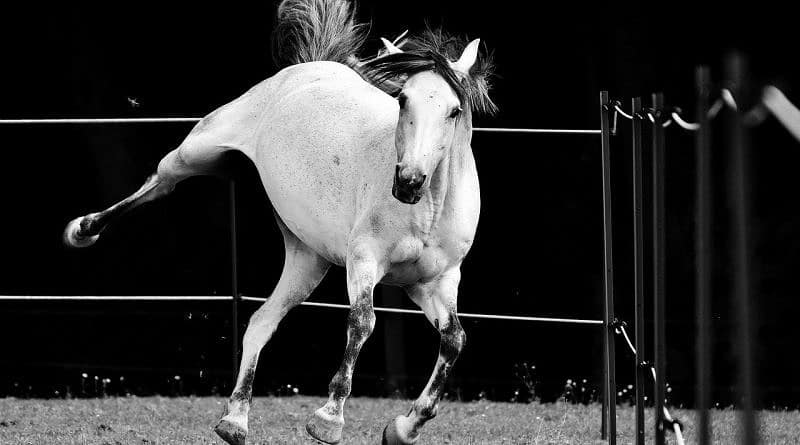Top Tip that will save you Time, Money, and Heartache
Don’t try to shut the stable door after the horse has already bolted! The best way to address problems is to intervene before things get out of hand!
Experienced horse people understand that it is easier to intervene in the early stages of a problem developing, rather than to leave it until it can no longer be ignored.
Horses are incredibly forgiving and tolerant animals. It is (sadly) possible to go a lifetime misunderstanding what motivates horse behaviour and how horses see, learn, and understand the world and still manage to ride and work with horses to an appreciable extent.
It’s now pretty well-documented that even professionals in the industry often don’t really understand how horses learn to respond to cues. And there are a number of popular training approaches that misinterpret behaviours like licking and chewing or oversimplify horse social structure.
What this means is that it’s very easy to take problems for granted because horses can still do much of what we want them to do regardless of small issues that we leave unresolved.
Professionals will sometimes refer to ‘holes’ in a horse’s training – other times the issue may not be specifically to do with training but, for example, a physical or medical issue, problems with equipment such as saddle fit, context/environmental effects leading to trigger stacking and so on.
It often seems easier, as long as the horse is still managing to do what’s required of them, to work around issues as they emerge or find ways to mask them. We all know people who are looking for that perfect ‘unicorn’ bit or using certain gadgets to fix their horse into a position. It’s much easier to look for these types of ‘quick’ solutions than take time to address the root cause. It isn’t just training that this applies to – owners will look for cheap, quick fixes to medical issues as well (think cure-all coconut oil).
There comes a point where some things can no longer be ignored… The trouble is that, frequently, when this point has been reached, it means that things have been allowed to escalate or deteriorate to an extent where addressing the problem is going to be more dangerous, more costly, more stressful, more difficult, more time consuming… Or sadly, in some cases, simply impossible.
As a behavioural consultant, I cannot count the times I wished the owner had sought help sooner. In this line of work, you often find that the owner has only started to realise that they need to get a professional involved when their horse has become dangerous for them to handle. Small things that could have been dealt with easily when the first signs appeared can quickly turn into much more serious problems. Sometimes it’s difficult to grasp how easy it is for a behaviour to escalate to the point of becoming dangerous. But if the root cause is left unaddressed or the behaviour is accidentally reinforced, this can happen surprisingly quickly.
This is also true for medical issues and I know that many vets feel the same way about early intervention. Problems that could be treated easily at first can quickly turn into problems that are not only more costly to treat but now also potentially life-threatening.
I frequently find myself wishing that riders would seek help sooner regarding their own problems too! It is much easier to correct bad habits such as postural issues or nagging when they have yet to become established patterns of behaviour. Resolving fear is also often easiest before the rider has had a chance to rehearse and reinforce behaviours that feed into this state of mind.
They say prevention is better than cure… But the next best thing is early intervention. So if you notice something ‘off’, try to address the problem head-on right away. Seek appropriate professional help from the start – it will save you money, time, heartache, and headaches a-plenty in the long run!







